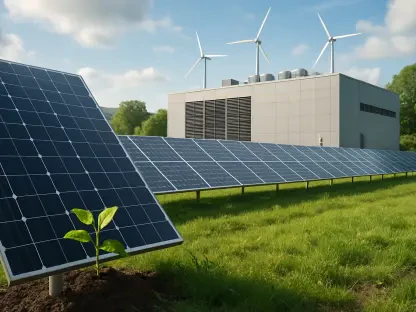The U.S. solar industry recently experienced unprecedented growth, with the first quarter of this year witnessing an unprecedented expansion in solar manufacturing capacity. A doubling in solar cell production and an addition of 8.6 GW in solar module manufacturing capacity denote striking industrial resurgence. However, this positive momentum faces an uncertain future. Proposed federal tax credit reductions threaten to undermine these gains, casting doubts on the industry’s ability to maintain its growth trajectory. The central concern revolves around whether this sector’s rapid growth can persist amidst anticipated policy shifts.
Recent changes in the legislative landscape could deeply impact the solar industry’s viability in the U.S., highlighting a critical moment for stakeholders. The federal tax credits, which have historically underpinned the industry’s growth and viability, face potential cuts after a recent bill passed in the House. If ratified by the Senate, these changes threaten the financial feasibility of upcoming solar projects and domestic manufacturing efforts. Such scenarios highlight the broader significance of this issue, with potential ripple effects extending into energy availability and renewable energy demand, especially from data-critical sectors like data centers.
Expanding Capacities and Emerging Challenges
Methodology
The research delved into various data sources to gauge the solar sector’s growth and potential vulnerabilities. By collating data from industry reports and market analysts like Wood Mackenzie, the study adopted both qualitative and quantitative approaches. The information gathered provided insights into current production capacities, potential policy impacts, and market forecasts.
Findings
The findings reveal an astonishing increase in solar manufacturing capacity, with the U.S. setting new records in production output. However, projections from analysts signal an impending downturn. A contraction is expected, with the industry projected to shrink annually by approximately 2% till the end of this decade. The specific decline in new solar installations, anticipated to drop by around 7% over the next two years, underscores the prevailing concerns exacerbated by proposed tax credit revisions.
Implications
The research highlights several implications drawn from the findings, particularly focusing on policy and economic dimensions. The dependence of solar project viability on federal incentives is evident, and with looming cuts, there is potential for widespread project cancellations and delays. This could create an imbalance in energy supply-demand dynamics, especially as sectors with high energy consumption increasingly lean toward renewables. Additionally, while alternative energy sources are being considered, their extended development timelines make solar industries vital for immediate energy needs.
Reflection on the Study and Future Research Directions
Reflection
This study presented unique challenges, chief among them being the rapidly shifting policy terrain impacting the solar industry. Debates on the merits and drawbacks of federal credits added complexities in interpreting data trends. However, by synthesizing various data points and perspectives, a holistic view of the industry’s present and potential future was achieved. While the scope covered key policy implications, challenges in assessing indirect consequences highlight areas ripe for further investigation.
Future Directions
Future research should focus on dissecting the broader economic impacts of federal tax credit cuts. Key areas of interest include exploring the effects on employment within the sector, forecasting potential shifts towards other renewable sources, and identifying policy alternatives to support sustained industry growth. Furthermore, avenues for empirical studies examining the solar market’s adaptability under changing policy climates could yield valuable insights for policymakers and industry stakeholders.
Conclusion
The solar industry’s recent growth narrative depicts a sector on the cusp of a major transition. While the present achievements in solar manufacturing capacity are commendable, predicted reductions in tax credits pose substantial risks that could stifle momentum. Navigating this transition calls for strategic policy interventions that balance incentives with sustainable growth strategies. Addressing these challenges effectively requires coordinated efforts between industry players, policymakers, and researchers to ensure renewable energy remains integral to America’s energy future.









